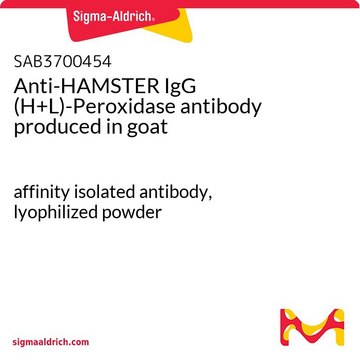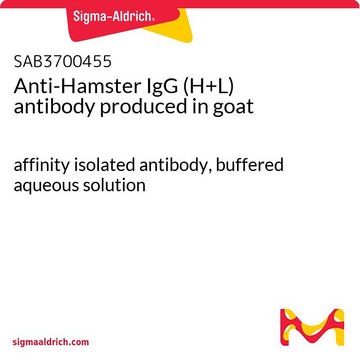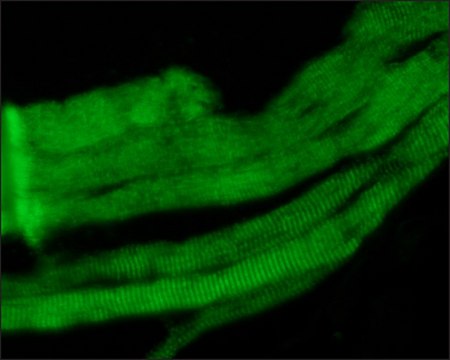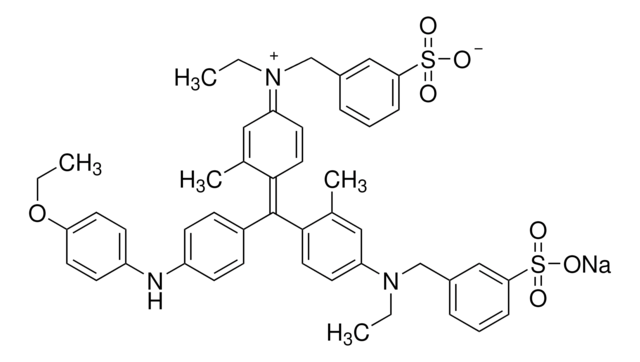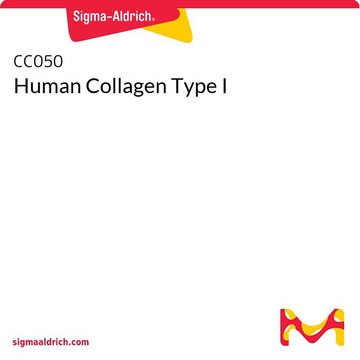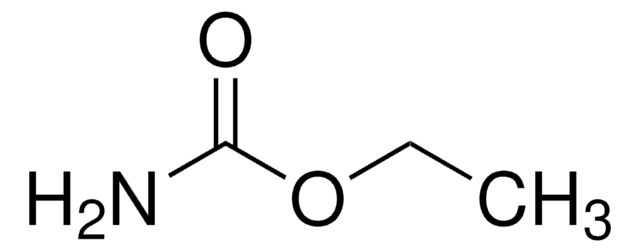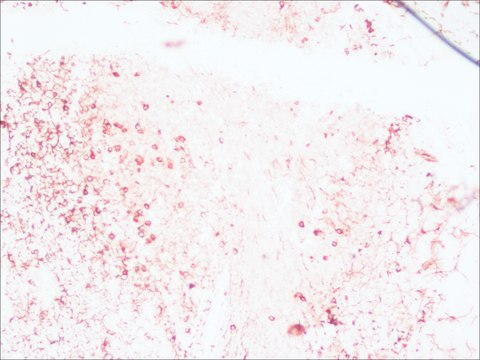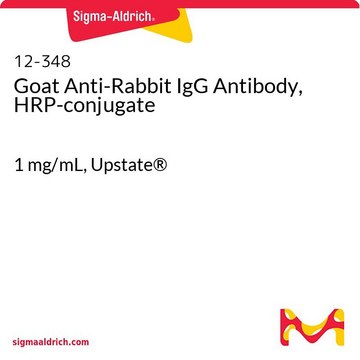推荐产品
生物来源
rabbit
质量水平
偶联物
unconjugated
抗体形式
affinity isolated antibody
抗体产品类型
secondary antibodies
克隆
polyclonal
表单
buffered aqueous solution
技术
indirect ELISA: 1:100,000
运输
dry ice
储存温度
−20°C
靶向翻译后修饰
unmodified
一般描述
IgG is present in large quantities in the human serum. IgG is composed of glycoproteins, out of which it is 82-96% proteins and 4-18% carbohydrates. It consists of four sub-classes i.e IgG1, IgG2, IgG3, and IgG4. IgG is composed of four polypeptide chains-two heavy chains (γ chains) and two light chains (κ or λ chains) which are linked by inter-chain disulfide bonds. The heavy chains consist of a N-terminal variable domain (VH) and three constant domains (CH1, CH2, CH3). A hinge region exists between the CH1 and CH2 region. The light chains have one N-terminal variable domain (VL) and one constant domain (CL). The heavy and the light chains are linked at VH and CH1 domain to form the Fab arm (Fragment antigen binding). The antigen binds to the V regions of the antibody.
应用
Anti-Hamster IgG (whole molecule) antibody produced in rabbit is suitable for use in Immunoelectron Microscopy and FACS.
生化/生理作用
IgG antibody subtype is the most abundant serum immunoglobulin of the immune system. It is secreted by B cells and is found in blood and extracellular fluids and provides protection from infections caused by bacteria, fungi and viruses. Maternal IgG is transferred to fetus through the placenta that is vital for immune defense of the neonate against infections.
IgG, a monoclonal antibody can be cleaved at the hinge region by nonspecific proteases like papain and pepsin. This can result in univalent Fab (Fragment antigen binding) fragments or bivalent F(ab′)2 fragments. These two enzymes have a broad substrate specificity resulting in heterogenous fragments.
外形
Solution in 0.01 M phosphate buffered saline, pH 7.4, containing 15 mM sodium azide as preservative
免责声明
Unless otherwise stated in our catalog or other company documentation accompanying the product(s), our products are intended for research use only and are not to be used for any other purpose, which includes but is not limited to, unauthorized commercial uses, in vitro diagnostic uses, ex vivo or in vivo therapeutic uses or any type of consumption or application to humans or animals.
未找到合适的产品?
试试我们的产品选型工具.
储存分类代码
12 - Non Combustible Liquids
WGK
nwg
闪点(°F)
Not applicable
闪点(°C)
Not applicable
法规信息
常规特殊物品
历史批次信息供参考:
分析证书(COA)
Lot/Batch Number
Vinay Kumar et al.
JACC. Basic to translational science, 7(10), 1038-1049 (2022-11-08)
CD4+ T cells turn pathological during heart failure (HF). We show that the expression of tumor necrosis factor (TNF)-α and tumor necrosis factor receptor (TNFR1) increases in HF-activated CD4+ T cells. However, the role of the TNF-α/TNFR1 axis in T-cell
C Reis e Sousa et al.
The Journal of experimental medicine, 178(2), 509-519 (1993-08-01)
Dendritic cells (DC) isolated from lymphoid tissues are generally thought to be nonphagocytic in culture. It has therefore been unclear how these cells could acquire particulate antigens such as microorganisms for initiation of primary immune responses. Lymphoid DC derive in
Sandra L Martínez-Hernández et al.
Journal of immunology research, 2021, 6697900-6697900 (2021-04-08)
Entamoeba histolytica is an intestinal parasite that causes dysentery and amebic liver abscess. E. histolytica has the capability to invade host tissue by union of virulence factor Gal/GalNAc lectin; this molecule induces an adherence-inhibitory antibody response as well as to
Papain digestion of different mouse IgG subclasses as studied by electrospray mass spectrometry
Adamczyk M, et al.
Journal of Immunological Methods, 237(1-2), 95-104 (2000)
Gestur Vidarsson et al.
Frontiers in immunology, 5, 520-520 (2014-11-05)
Of the five immunoglobulin isotypes, immunoglobulin G (IgG) is most abundant in human serum. The four subclasses, IgG1, IgG2, IgG3, and IgG4, which are highly conserved, differ in their constant region, particularly in their hinges and upper CH2 domains. These
我们的科学家团队拥有各种研究领域经验,包括生命科学、材料科学、化学合成、色谱、分析及许多其他领域.
联系技术服务部门